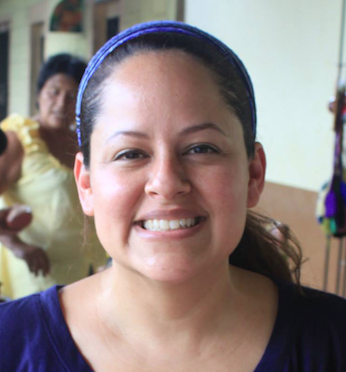The Portrait of Juan Pablo Wainwright
- Claudia A Portillo

- Sep 29, 2019
- 4 min read
Updated: Sep 11, 2021
When I was around six, I remember running cautiously around my great-aunt’s house in San Salvador to avoid splitting my head open on the cold, wet tiled floor that was constantly being mopped. It did not stop us, kids, from weaving in-and-out of the bedrooms and carrying on with laughter and joy. But, running out of my great-aunt Tía Fema’s bedroom was different for me. I remember taking the time to gaze at a wood framed portrait of a man that hung above her bedroom door. He wore a soldier's uniform and was a Caucasian man that did not look like any of us. I had only ever seen my one male cousin in the house, and it did not look like him. I wondered who he was. But even as a child, I knew better and never asked.
Born and raised in the U.S., our family trips to El Salvador in the early 1970s were always short, but I remember them fondly. I played with my sister and cousins all day, took weekend trips with family to quaint beaches, and would enjoy POPS' ice cream with my grandfather on hot, muggy afternoons. As children, we were completely unaware of the tension all around us. There was a looming civil war back then. The war eventually came and it kept me from seeing my grandparents, cousins, aunts and uncles for nearly ten years.
In my teens, I finally discovered who the mysterious man in the portrait was. He was Juan Pablo Wainwright, my great-aunt's companion, and a Honduran communist leader. Most notably remembered for spitting at the Dictator of Guatemala Jorge Ubico, who had him assassinated in 1931.
Rina Villars, a Honduran author, wrote Juan Pablo Wainwright's biography with the help of my aunt Silvia (Tía Fema's daughter). She provided a testimony and the letters from Juan Pablo to Tía Fema that had been saved for decades.
Before the book was written, a couple of published articles existed about Juan Pablo Wainwright. They were disparaging portrayals such as in the article by "La Gaceta" written in 1932.
"His only interest is burning, destroying, breaking, raping, cutting in two, in four, beating and redistributing private property."
His affiliation with the Communist Party in Honduras was considered treason, and therefore, opened to defamation of his character. Wainwright denounced social inequalities and U.S. imperialism in Central America. He was often jailed for publicly condemning the degrading treatment of starving workers by the U.S. owned United Fruit Company in Honduras. He came from an upper-class Honduran family on his maternal side and his father was originally from Leeds, England who had family living in the United States.

In Villars' book, Juan Pablo Wainwright is characterized very differently than the published accounts generated decades ago. For his beloved companion, Eufemia Durán, Juan Pablo was the loving father of their two girls. In his letters to Tía Fema, he would sometimes send parenting advice. And, just days before his execution in 1932, he wrote:
I want you to be, again, the soul of steel and loving mother who was in San Pedro Sula and deserved so many sympathies and admiration. I will first refer to my beloved dolls. Defend their health incessantly; take care not to play with children with cough, warts, or any other disease; remove them from the house before they start to sweep ... never skip their orange juice in the morning, but make sure it is freshly squeezed because it is cleaner ... do not punish them, do not scold them; never show them the slightest contempt ... always talk to them about me and tell them I'll be there soon. I hope it so!
Tía Fema's worst fears materialized when she received the news that her Juan was "officially" (the date has been contested) killed on February 18, 1932. Tía Fema was left a widow in El Salvador—her country of origin—with two small children. Even with her family's support, Tía Fema did not get to mourn his death. Once again she had to depend on her "alma de acero" (soul made of steel) to get the family through any implications of being associated with a political activist.
While the portrait remained in her possession since the 1930s, the story of Juan Pablo Wainwright stayed buried, separated from family consciousness because of the pain it brought to Tía Fema and the looming war in El Salvador against the "communist".
The last time I was with my kindhearted and brave great-aunt Eufemia in her home was in the summer of 1988. She was ailing then, and so our visits together were brief. And because I stayed outside her bedroom door, I did not get to see the portrait that haunted me so long ago.
She passed away that same year surrounded by loved ones and with the portrait of Juan Pablo Wainwright above her bedroom door.

To learn more about this time in Honduras, and the political and personal story of the Communist leader, Juan Pablo Wainwright, read Rina Villars' biographical book, "Lealtad y Rebeldia: La Vida De Juan Pablo Wainwright" (Loyalty and rebellion: The life of Juan Pablo Wainwright).




Comments